Description
Recorded live February 25, 2017 Croocker Theater, Brunswick High School Timothy Burns, conductor Tim Bathras, Bill Putnam, recording enginners Serenade for winds in D minor, B. 77, Antonin Dvorák (1841 – 1904) Moderato, quasi marcia Menuetto: Tempo di minuetto; Trio: Presto Andante con moto Finale: Allegro molto Blue Shades, Frank Ticheli (b. 1958) Goyaesques, Timothy Burns (b. 1987) La familia de Carlos IV Corral de locos La maja desnuda El baile de San Antonio de la Florida Saturno devorando a su hijo Pictures at an Exhibition, Modest Mussorgsky (1839 - 1881), transcribed for orchestra by Maurice Ravel, adapted for winds by Paul Lavender Promenade The Gnome Promenade The Old Castle Promenade Tuileries (Children Quarreling After Play) Bydlło (Cattle) Promenade Ballet of the Unhatched Chicks Samuel Goldenberg and Schmuÿle The Marketplace (Important News) Catacombs (A Roman Sepulchre) With the Dead in a Dead Language The Hut on Hen’s Legs (Baba-Yaga) The Great Gate of Kiev
Piccolo
Nicole J. Rawding
Flute
Karina Carlsson Babcock
Rachael Barter
Vene Hashimoto
Diana McNulty
Nicole Rawding
Oboe
Billie-Jo Brito
Jennifer Maillet
Jonathan Tefft
English Horn
Billie-Jo Brito
Bassoon
Emily Olmstead
Linda Soares
Christopher Szustak
Contrabassoon
Christopher Szustak
E-Flat Clarinet
Jean Quinn
Clarinet
Tegan Bryand
Julie Cross
Carol Furman
Kara LaRochelle
Ray Libby
Laura Manduca
Jean Quinn
Ellen Rust
Alto Clarinet
Ellen Lucy
Bass Clarinet
Sean Potter
Contrabass Clarinet
Tegan Bryand
Soprano Saxophone
Cara Kinney
Alto Saxophone
Cara Kinney
Jason LaWind
Tenor Saxophone
Kate Campbell Strauss
Baritone Saxophone
Jayne Sawtelle
Trumpet
Jeremy Binette
Michelle Kingston
Thomas Kremser
Sarah Sukeforth
Horn
Heather Hastings
Aubrey Landsfeld
Connie Plaisted
Caitlin Ramsey
John Wheeler
Trombone
Matt Cloutier
Alyson Spencer-Reed
Bass Trombone
Tim Bathras
Euphonium
Tim Clement
Adam Goad
Tuba
Joshua LaChance
Cello
Mathew Nichols
String Bass
Kinnon Church
Joshua DeScherer
Piano/Celesta
George Wiese
Harp
Suki Flanigan
Timpani
Josh Champagne
John Raymond
Percussion
Josh Champagne
Rusty Quinn
John Raymond
Emma Sheffield
Serenade for winds in D minor, B. 77
The four-movement Serenade for winds in D minor, B. 77 was written in just two weeks in January 1878. Dvorák scored it for two oboes, two clarinets, two bassoons, three horns, cello, and double bass, with an ad lib contrabassoon part as well. Despite the lack of the higher register that would have come from the inclusion of flutes in the mix, the work as a whole has a lightness to it that stems from Dvorák’s graceful melodic lines and ensemble writing, fitting for a piece recalling the refinement of the Classical era. Its form may be descended from Classical ones, but the music is entirely filled with Slavonic folk music rhythms and harmonies.
It opens with a Moderato quasi-Marcia that can be oh-so-serious—or mocking, if its humor isn’t balanced just so. It’s the only movement in a minor key; all of the remaining movements are in major keys, adding to the good-natured qualities of the serenade overall.
The second movement may be titled Minuetto and feel something like a Classical minuet, but it’s really a Bohemian sousedská with a furiant trio using a hemiola pattern.
Thirdly is an Andante con moto, a mostly pastoral scene, but with moments of passion created in arcing lines for the oboe and clarinet.
The Finale is something of a rondo, as playfully structured as it is teasing in rhythm and textures. It recalls the theme from the first movement in one of its episodes, set against the more dance-like main theme of the movement.
Dvorák conducted the premiere of the work at a Prague concert on November 15, 1878, in a program devoted to his compositions. The serenade was immediately well-received and published the following April. Brahms praised it, writing to the violinist Joseph Joachim: “a more lovely, refreshing impression of real, rich, and charming creative talent you can’t easily have….I think it must be pleasure for the wind players.” And it remains a well-loved favorite of wind players and enthusiasts.
Antonín Dvořák (1841 – 1904) was a Czech composer. After Bedřich Smetana, he was the second Czech composer to achieve worldwide recognition. Following Smetana’s nationalist example, Dvořák frequently employed aspects, specifically rhythms, of the folk music of Moravia and his native Bohemia. Dvořák’s own style has been described as “the fullest recreation of a national idiom with that of the symphonic tradition, absorbing folk influences and finding effective ways of using them.
Dvořák displayed his musical gifts at an early age, being an apt violin student from age six. The first public performances of his works were in Prague in 1872 and, with special success, in 1873, when he was age 31. Seeking recognition beyond the Prague area, he first submitted a score of his First Symphony to a prize competition in Germany, but he did not win, and the manuscript, not returned, was lost until rediscovered many decades later. Then, in 1874, he first made a submission for the Austrian State Prize for Composition, including scores of two further symphonies and other works. Johannes Brahms, unbeknownst to Dvořák, was the leading member of the jury and was highly impressed. The prize was awarded to Dvořák for 1874 and again in 1876 and in 1877, when Brahms and the prominent critic Eduard Hanslick, also a member of the jury, made themselves known to him. Brahms recommended Dvořák to his publisher, Simrock, who soon afterward commissioned what became the Slavonic Dances, Op. 46. These were highly praised by the Berlin music critic Louis Ehlert in 1878, the sheet music (of the original piano 4-hands version) had excellent sales, and Dvořák’s international reputation at last was launched.
Dvořák’s first piece of a religious nature, his setting of Stabat Mater, was premiered in Prague in 1880. It was very successfully performed in London in 1883, leading to many other performances in the United Kingdom and United States. In his career, Dvořák made nine invited visits to England, often conducting performances of his own works. His Seventh Symphony was written for London. Visiting Russia in March 1890, he conducted concerts of his own music in Moscow and Saint Petersburg. In 1891 Dvořák was appointed as a professor at the Prague Conservatory. In 1890–91, he wrote his Dumky Trio, one of his most successful chamber music pieces. In 1892, Dvořák moved to the United States and became the director of the National Conservatory of Music of America in New York City. While in the United States, Dvořák wrote his two most successful orchestral works. The Symphony From the New World spread his reputation worldwide. His Cello Concerto is one of the most highly regarded of all cello concerti. Also, he wrote his American String Quartet, his most appreciated piece of chamber music. But shortfalls in payment of his salary, along with increasing recognition in Europe and an onset of homesickness, led him to leave the United States in 1895 and return to Bohemia.
“In 1992 I composed a concerto for traditional jazz band and orchestra, Playing With Fire, for the Jim Cullum Jazz Band and the San Antonio Symphony. That work was composed as a celebration of the traditional jazz music I heard so often while growing up near New Orleans.
I experienced tremendous joy during the creation of Playing With Fire, and my love for early jazz is expressed in every bar of the concerto. However, after completing it I knew that the traditional jazz influences dominated the work, leaving little room for my own musical voice to come through. I felt a strong need to compose another work, one that would combine my love of early jazz with my own musical style.
Four years, and several compositions later, I finally took the opportunity to realize that need by composing Blue Shades. As its title suggests, the work alludes to the Blues, and a jazz feeling is prevalent — however, it is in not literally a Blues piece. There is not a single 12-bar blues progression to be found, and except for a few isolated sections, the eighth-note is not swung.
The work, however, is heavily influenced by the Blues: “Blue notes” (flatted 3rds, 5ths, and 7ths) are used constantly; Blues harmonies, rhythms, and melodic idioms pervade the work; and many “shades of blue” are depicted, from bright blue, to dark, to dirty, to hot blue.
At times, Blue Shades burlesques some of the clichés from the Big Band era, not as a mockery of those conventions, but as a tribute. A slow and quiet middle section recalls the atmosphere of a dark, smoky blues haunt. An extended clarinet solo played near the end recalls Benny Goodman’s hot playing style, and ushers in a series of “wailing” brass chords recalling the train whistle effects commonly used during that era.
Blue Shades was commissioned by a consortium of thirty university, community, and high school concert bands under the auspices of the Worldwide Concurrent Premieres and Commissioning Fund.”
-Frank Ticheli
Frank Ticheli (b. 1958) has had his music described as being “optimistic and thoughtful” (Los Angeles Times), “lean and muscular” (New York Times), “brilliantly effective” (Miami Herald) and “powerful, deeply felt crafted with impressive flair and an ear for striking instrumental colors” (South Florida Sun-Sentinel). Ticheli joined the faculty of the University of Southern California’s Thornton School of Music in 1991, where he is Professor of Composition. From 1991 to 1998, Ticheli was Composer in Residence of the Pacific Symphony.
Frank Ticheli’s orchestral works have received considerable recognition in the U.S. and Europe. Orchestral performances have come from the Philadelphia Orchestra, Atlanta Symphony, Detroit Symphony, Dallas Symphony, American Composers Orchestra, the radio orchestras of Stuttgart, Frankfurt, Saarbruecken, and Austria, and the orchestras of Austin, Bridgeport, Charlotte, Colorado, Haddonfield, Harrisburg, Hong Kong, Jacksonville, Lansing, Long Island, Louisville, Lubbock, Memphis, Nashville, Omaha, Phoenix, Portland, Richmond, San Antonio, San Jose, Wichita Falls, and others.
Ticheli is well known for his works for concert band, many of which have become standards in the repertoire. In addition to composing, he has appeared as guest conductor of his music at Carnegie Hall, at many American universities and music festivals, and in cities throughout the world, including Schladming (Austria), Beijing and Shanghai, London and Manchester, Singapore, Rome, Sydney, and numerous cities in Japan.
Frank Ticheli is the recipient of a 2012 “Arts and Letters Award” from the American Academy of Arts and Letters, his third award from that prestigious organization. His Symphony No. 2 was named winner of the 2006 NBA/William D. Revelli Memorial Band Composition Contest. Other awards include the Walter Beeler Memorial Prize and First Prize awards in the Texas Sesquicentennial Orchestral Composition Competition, Britten-on-the-Bay Choral Composition Contest, and Virginia CBDNA Symposium for New Band Music.
Ticheli was awarded national honorary membership to Phi Mu Alpha Sinfonia, “bestowed to individuals who have significantly contributed to the cause of music in America,” and the A. Austin Harding Award by the American School Band Directors Association, “given to individuals who have made exceptional contributions to the school band movement in America.” At USC, he has received the Virginia Ramo Award for excellence in teaching, and the Dean’s Award for Professional Achievement.
Frank Ticheli received his doctoral and master’s degrees in composition from The University of Michigan. His works are published by Manhattan Beach, Southern, Hinshaw, and Encore Music, and are recorded on the labels of Albany, Chandos, Clarion, Equilibrium, Klavier, Koch International, Mark, Naxos, and Reference.
Goyaesques is a musical depiction of 5 paintings by the Spanish Painter Francisco Goya (1746 – 1828).
The piece opens with regal chords depicting La familia de Carlos IV, a portrait of the Spanish royal family. Not everyone in the painting is beautiful, on the contrary some are rather hag-like, while others are young children – some looking the wrong way or hiding behind their parents. The central figure is Queen Maria Luisa, who by all accounts ran the country while the king was out hunting. Goya “photo-bombed” this portrait and can be seen at his easel in the back left.
Corral de locos shows an event at an insane asylum. Goya feared losing his own sanity and it became a central theme in much of his work. In this painting, the warden intervenes as two men fight. The alto saxophone, perhaps the most insane of all instruments, takes the listener from a recessed hiding spot forward out into the yard. Others join in watching the brief fight before everyone retreats back into the shadows.
La maja desnuda is renowned for the straightforward and unashamed gaze of the model towards the viewer. It has also been cited as among the earliest Western artwork to depict a nude woman’s pubic hair without obvious negative connotations, such as in images of prostitutes. With this work Goya not only upset the ecclesiastical authorities, but also titillated the public and extended the artistic horizon of the day. The music swirls around lushly but leaves us with a hint of a question – who was this woman? Some have speculated that she was Goya’s mistress, or even the mistress of the prime minister, or perhaps a composite of many women. Goya painted a clothed version, La maja vestida, which originally hung in front of the nude painting in a private collection so that a pulley system could reveal the nude painting. Today the two hang side by side in the Museo del Prado in Madrid, Spain.
El baile de San Antonio de la Florida is a dance in rondo form. Goya’s painting shows a group of musicians and dancers in the countryside. The open circle invites us to join in the dance. A few people take turns with solo dances with the whole group dancing between soloists. The music culminates in everyone doing their own variation on the dance in their own time, but expertly ending together.
Saturno devorando a su hijo is one of Goya’s “Black Paintings.” After losing his hearing, Goya bought a home called Quinta del Sordo or “House of the Deaf.” Here he lived in seclusion and painted several works whose themes were intense, haunting and dark. These were never meant for public view and were painted directly onto the walls of the house. Saturno depicts the Titan Kronos (Romanized to Saturn) eating his newborn son after it was foretold that one of his sons would overtake him. The music is primal and terrifying with a steady ticking of a clock. As bells toll, the hour gets closer and closer to the birth whereupon he immediately devours the infant whole. Shock and awe are all we are left with, as the carnage echoes in our minds.
Russian composer Modest Mussorgsky composed Pictures at an Exhibition in 1874. The work is a tribute to his friend and colleague Viktor Hartmann, an artist who died one year earlier. Vladimir Stasov, an art critic who was a mutual friend and enthusiastic supporter of both the artist and composer, assembled a commemorative exhibit in St. Petersburg, and Mussorgsky’s frequent visits to the gallery were inspirational:
“Hartmann is boiling as Boris [Godunov] boiled; sounds and ideas have been hanging in the air; I am devouring them and stuffing myself – I barely have time to scribble them on paper. I am writing the fourth number – the links are good (on Promenade). I want to finish it as quickly and securely as can. My profile can be seen in the interludes. I consider it successful to this point.”
Mussorgsky and Hartmann were kindred spirits who shared a desire to turn away from the European training and influence that had held sway over Russian music, art, and literature. Both were intrigued by folk and popular elements of Russian history and culture, and were determined to use them in their efforts to develop a nationalistic identity in the arts. Judging from Mussorgsky’s tribute to Hartmann, music that possesses a dramatic and sweeping quality on a scale far greater than the artwork itself, the relationship between Mussorgsky and Hartmann must have been deep and powerful. The music begins with a Promenade, a noble theme that represents the composer moving through the gallery, and that returns as transition material between several of the movements. According to Stasov, Mussorgsky depicted himself “roving through the exhibition, now leisurely, now briskly in order to come close to a picture that had attracted his attention, and at times sadly, thinking of his departed friend.” As the Promenade theme returns at various points during the work, it takes on different emotional qualities, reflecting the evolving feelings of the composer as he makes his way through the exhibit. The artworks Mussorgsky portrays musically are described below:
The Gnome – This movement was inspired by a work that Stasov describes as a “sketch depicting a little gnome, clumsily running with crooked legs,” a drawing that has unfortunately not survived. He also mentions that the gnome in the sketch is carved from wood, “a kind of nutcracker,” and that the “gnome accompanies his bizarre movements with savage shrieks,” movements that are vividly depicted in the music.
The Old Castle – Hartmann’s lost watercolor portrayed an ancient Italian castle before which a troubadour stands, playing his lute. Although the scene is thoroughly Italian, and the underlying rhythm of the music is that of the Siciliano, the melody is unmistakably Russian, heavily influenced by the folk music of Mussorgsky’s native land.
Tuileries (Children Quarreling After Play) – The artwork that inspired this movement has disappeared, although the catalogue of the original exhibit lists a work titled Tuileries Gardens, crayons, which was undoubtedly the inspiration. Throughout his life Mussorgsky, like Ravel, maintained a special connection with the world of children. He never lost his ability to see the world through the eyes of a child, a rare talent that reveals itself in this charming movement.
Bydło (Cattle) – Like Tuileries, this movement was inspired by an illustration that has also been lost. But the mystery of Bydlo is increased by the fact that there is no record of any artwork depicting cattle or an ox-cart in the exhibition catalogue. In a note to Stasov, Mussorgsky wrote, “Right between the eyes – the ox-cart,” a reference to his intent that this movement should take listeners by surprise: a sudden fortissimo without the benefit of an introductory promenade. When Rimsky-Korsakov edited the work for publication, he was either unaware or unconvinced by Mussorgsky’s intent and changed the opening dynamic of Bydlo to pianissimo in order to create the illusion of the ox-cart approaching from the distance.
Ballet of the Unhatched Chicks -According to Stasov, “In 1870 Hartmann designed the costumes for the staging of the ballet Trilbi at the Maryinsky Theatre, St. Petersburg. In the cast were a number of boy and girl pupils from the theatre school arrayed as canaries. Others were dressed up as eggs.” Once again, Mussorgsky’s affinity for children shines through this bright and energetic depiction.
Samuel Goldenberg and Schmuyle – Much confusion and controversy has surrounded the name of this movement, due in large part to the subtitle Stasov added for the first published edition, Two Jews, Rich and Poor. An examination of the manuscript reveals that Mussorgsky did not use Stasov’s subtitle, but did indeed use the personal names of the two subjects. These names do not appear in the catalogue of Hartmann’s exhibit, however, and were likely created by the composer. Regardless of the title, the artwork and music both vividly portray members of two very different elements of society.
The Market Place (Important News) – The artwork that inspired this movement is lost, although it was probably one or more of the seventy-five images of Limoges that were included in the exhibit. According to Stasov, “Hartmann spent a fairly long time in the French town in 1866, executing many architectural sketches and genre pictures. The musical version of this sketch [illustrates] the crowd shrieking, disputing, chattering and quarreling in the marketplace.”
Catacombs (A Roman Sepulchre) – With the Dead in a Dead Language – Hartmann’s portrayal of the Parisian catacombs, one of the collection’s most evocative and personal images, has survived. It depicts the artist himself, along with a friend and their guide, as they are about to tour the catacombs by lamplight. To the right of the entrance is a large case of skulls glowing in the darkness, a detail that attracted Mussorgsky’s attention. In the margins of the manuscript he penciled the subtitle of this movement in Latin, commenting that “Latin text would be fine: the creative genius of the late Hartmann leads me to the skulls and invokes them; the skulls begin to glow.” As the Promenade theme emerges from these haunting chords, it suggests that in his imagination the composer has joined the artist in his nocturnal tour through the catacombs.
The Hut on Hen’s Legs (Baba-Yaga) – According to Stasov, “This piece is based on Hartmann’s design for a clock in the form of Baba-Yaga’s hut on hen’s legs, to which Mussorgsky added the ride of the witch in her mortar.” Mussorgsky scholar Michael Russ amplifies Stasov’s description: “Baba-Yaga appears in Russian fairy-tales. She lives deep in the woods in a hut whose hen’s legs allow it to rotate to face each unfortunate newcomer. There she lures lost children to eat them, crushing their bones in the giant mortar in which she rides through the woods, propelling herself with the pestle and covering her tracks with a broomstick.”
The Great Gate of Kiev – Stasov informs us that the gate that inspired this movement, designed by Hartmann for a competition at Kiev, was done in the “massive old Russian style, with a cupola in the form of a Slavonic helmet.” Although the goal of the competition was to identify a design for a new gate to be constructed in commemoration of Tsar Alexander l’s escape from an assassination attempt in 1866, the construction of the gate was cancelled. Regardless, Hartmann’s design attracted considerable attention, and he regarded it as one of his greatest accomplishments. Much like Mussorgsky’s music, it is thoroughly nationalistic in design, incorporating Russian elements such as the eagle, cupola, ancient Russian figures, and the old Slavonic inscription: “Blessed is he that cometh in the name of the Lord.” The composer mirrors the intent of the artist through the use of a Russian Orthodox chant as well as recurring bell motives that evoke the pealing of multiple carillons for a climax that is one of the most memorable in all classical music.
It is highly unlikely that there is another piece of classical music that has been arranged, transcribed, or adapted more often than Mussorgsky’s Pictures at an Exhibition. In the decades since it was published for solo piano in 1874, it has been re-imagined for an incredibly wide range of ensembles, including chamber orchestra, symphony orchestra, wind ensemble, concert band, jazz orchestra, brass ensemble, percussion ensemble, vocal ensemble, piano duet, piano trio, solo organ, organ trio, solo guitar, and synthesizer, as well as progressive rock, metal, and punk-jazz bands. When one tallies the published versions of these settings, the count exceeds sixty-five, and when the unofficial arrangements and incomplete settings are included the number easily surpasses one hundred! In spite of this deluge of transcriptions, however, there is only one whose fame and success rivals that of the composition itself: Maurice Ravel’s incomparable setting for symphony orchestra.
Ravel’s transcription was certainly not the first. That honor went to Russian composer and conductor Michael Touschmaloff, who most likely created his setting while still a student in Nicolai Rimsky-Korsakov’s composition class in 1886. When his arrangement was published in 1900 Rimsky-Korsakov was credited as a collaborator, although this was likely a marketing ploy since the setting’s straightforward treatment reveals little of Rimsky-Korsakov’s typical brilliance and flair. The next transcription did not arrive until 1915, when British conductor Sir Henry Wood crafted an arrangement that was played with some frequency for the decade following its creation. Its success was short-lived, however, for it was quickly overshadowed by the arrival of Ravel’s arrangement in 1922. The Russian-born conductor Serge Koussevitsky commissioned the French composer and master orchestrator to create a setting “in the manner of Rimsky-Korsakov.” While the transcription sounds much more like Ravel than Rimsky-Korsakov, it does possess the shimmer and sheen of the Russian master. Koussevitsky’s exclusive performance rights of the Ravel until 1929 allowed Wood’s setting to survive the decade, but when that contract expired Wood withdrew his version in recognition of the superiority of Ravel’s treatment. In spite of exorbitant performance fees, Ravel’s setting became very popular and quickly established itself as the standard by which all others were judged. Orchestrators and/or conductors such as Leo Funtek, Leonidas Leonardi, Leopold Stokowski, Lucien Cailliet, Vladimir Ashkenazy, and many others tried to recreate Ravel’s success, but none have come close. In the words of Arturo Toscanini, “the two great treatises on instrumentation were the one written by Berlioz and Ravel’s orchestration of Pictures.”
In the years since Ravel’s “treatise,” several settings of Pictures at an Exhibition have been prepared for concert band and/or wind ensemble. Some of these transcribers have eschewed Ravel completely, going back to the “source” in an effort to capture the grittiness and primitive Mussorgsky characteristics that many felt Ravel ignored, while others have elected to incorporate some of Ravel’s techniques with their own. As fine as many of these transcriptions have been, it seems that none has been able to completely escape Ravel’s considerable shadow.
In 2011 I asked Paul Lavender if he would consider a different approach for a new setting of Pictures at an Exhibition. Rather than trying to escape from Ravel, I wondered if it were possible to create a band transcription of Ravel, treating his setting as if it were an original composition. Lavender agreed to the challenge and has created this new version of Pictures that received its premiere performance at the 2012 Texas Bandmasters Association in San Antonio, Texas.
– Program Note by Colonel Michael Colburn, “The President’s Own” United States Marine Band
Modest Mussorgsky (1839 – 1881) was born in a well reputed family, Mussorgsky, who were considered the descendants of the first Ruthenian ruler, Ryurik. He started receiving piano lessons from his mother since the age of 6. Later, in his youth he also served at a military hospital in Saint Petersburg after he completed his studies at School for Cadets of the Guard. His compositions were largely Romantic and had a lot of Russian musical themes. One of his most renowned pieces is the single-movement orchestral work, ‘Night on Bald Mountain’. His talents as a songwriter are evident from his melodious songs like the three song cycles; The Nursery (1872), Sunless (1874) and Songs and Dances of Death (1877). His musical talents soon got eclipsed by his raging alcoholism. He spent his last days in a Saint Petersburg tavern. Later, in 1881 he suffered attacks of alcoholic epilepsy and died soon after his 42nd birthday.
As Vice President of Instrumental Publications for Hal Leonard Corporation, Paul Lavender directs the product development and marketing of Hal Leonard’s extensive catalog of performance publications for orchestra, concert band, marching band, and jazz ensemble, as well as instrumental books, collections and methods.
Paul supervises the creative work of many of the industry’s most respected composers and arrangers, publishing over 600 new instrumental publications each year. His longtime association with renowned film composer John Williams has produced the prestigious John Williams Signature Series, featuring Williams’ authentic film scores and concert music for professional orchestras. In addition, Paul has served as music supervisor and arranger for several of Williams’ concerts and special events, including the 2003 and 2008 Marine Band Anniversary Concerts, the 2004 Rose Bowl, and the 2004 Kennedy Center Honors program (televised on CBS).
Also a prolific writer, Paul has contributed more than 1,200 arrangements and compositions to the educational and concert repertoire, and he continues to be one of the most widely played writers today. Most recently, he has received international acclaim with two notable transcriptions for symphonic band: Leonard Bernstein’s Symphonic Dances from West Side Story, and Pictures at an Exhibition by Modest Mussorgsky and Maurice Ravel. Both works were written for and recorded by the world-renowned United States Marine Band, and performed on national tours under the direction of Colonel Michael J. Colburn.
Paul is also co-author and managing editor of Essential Elements, the leading method for beginning bands and orchestras. Under his direction, Hal Leonard recently released Essential Elements Interactive, the first-ever, cloud-based resource that features online learning for school band and orchestra programs. His expertise in music notation and preparation, recording production, and computer system design contributes to Hal Leonard’s continuing success as the leading print and digital music publisher, recognized throughout the world.
In 2005, Paul received the Distinguished Alumni Award from Central Michigan University, where he did both his undergraduate and graduate work in Music Theory and Composition. After serving as a graduate assistant teaching music theory at CMU, he furthered his music studies at the University of Michigan.
Paul and his wife Cheryl, an internationally recognized music educator and author of classroom resources, live in Brookfield, Wisconsin. They are the parents of three adult children, Eric, Brandon and Krista.
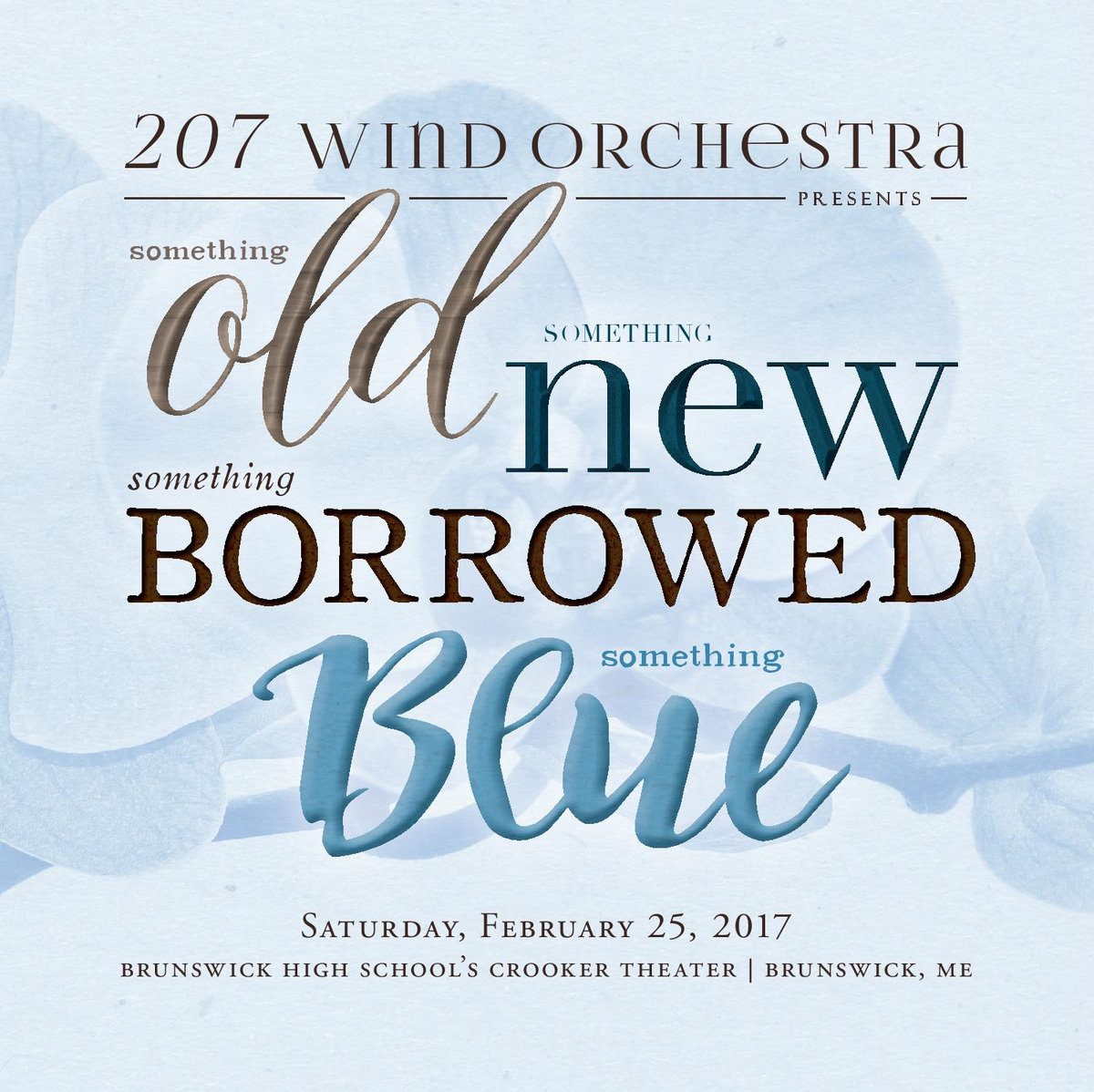
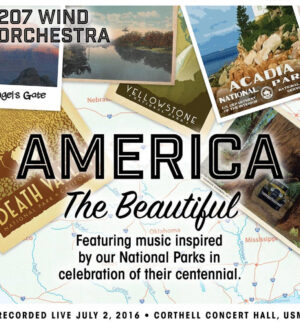
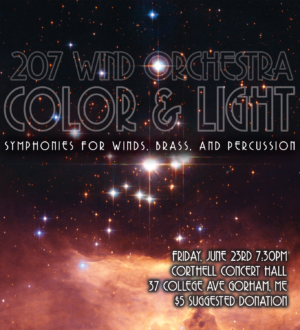
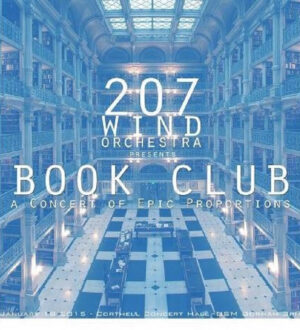
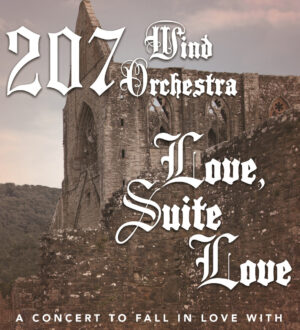
Reviews
There are no reviews yet.